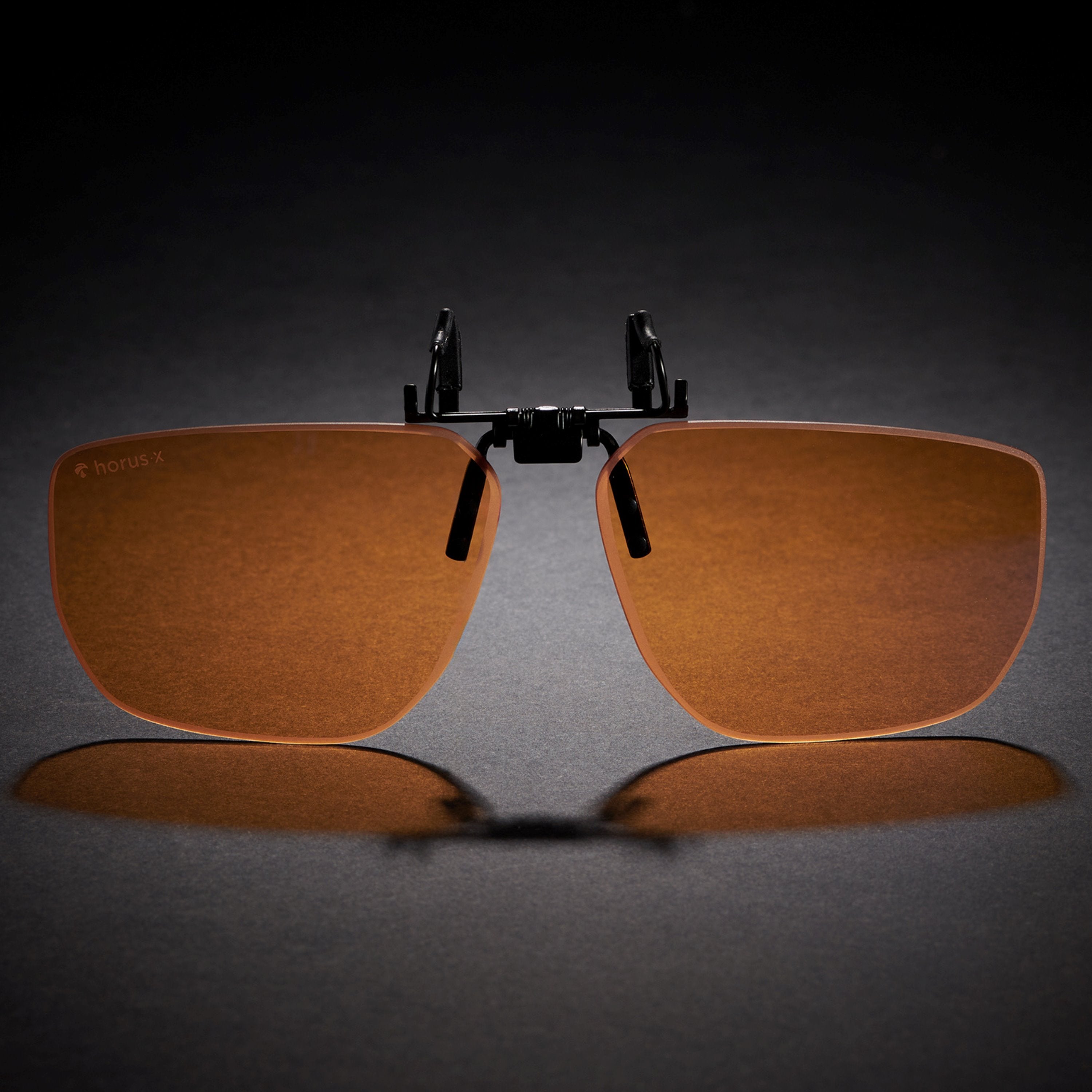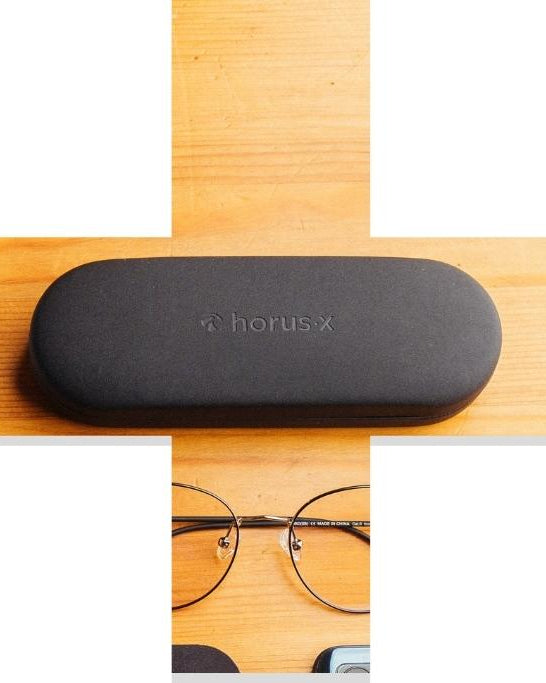If you're looking to learn about polarized lenses, it's probably because you've heard they help you see better. Or you may have noticed that many people wear them on sunglasses during the summer or when partaking in winter sports.
Polarized lenses are really popular because they make your vision clearer and protect your eyes from glare. But like anything else, there are advantages and disadvantages to polarized lenses.
The advantages of polarized lenses

If you want to protect yourself from annoying glare and improve your vision during your favorite outdoor activities, polarized lenses are the best way to do that. They offer multiple unique advantages, such as:
👁Better quality of vision
Thanks to their ability to eliminate reflections, polarized lenses provide better vision in bright light conditions. Two key examples of this are when there’s direct, bright sunlight on snow or on water.
By wearing polarized lenses, you can reduce eye strain and glare.
✨ Protection against reflections
One of the best advantages of polarized lenses is their protection against reflections that can hurt your eyes and distort your vision.
Whether driving, practicing water sports (get your mind out of the gutter), or hiking in the mountains, you can enjoy increased visibility and enhanced safety. Polarized lenses will keep your eyes safe and retinas undamaged no matter where on the Earth you are.
🌈 Better color perception
Polarized lenses filter out polarized light (funnily enough), which improves color perception. Hues appear sharper and more vibrant, for a more pleasing outdoor viewing experience; almost as if you’re staring right into the heart of Hyrule. Or using Instagram filters in real life.
☀️ Protection against UV rays
One of the biggest advantages of polarized lenses is that they also protect you against UV rays. The quality of that protection can vary depending on the type of glass used and the brand, however, so it’s always good to do your research. Choose sunglasses with 100% UV protection to stop those pesky rays slipping through.
👉 By reducing light reflections, improving color rendering and protecting against UV, polarized lenses limit eye fatigue. So, you can stay outside longer without feeling pain or discomfort, and fully enjoy your outdoor activities. Goodbye headache and hello tan!
The disadvantages of polarized lenses

As we’ve covered, there are advantages and disadvantages of polarized lenses. Since these types of lenses have rather marked characteristics, they’re not ideal to wear in every situation so while there are a lot of positives in wearing polarized lenses, its important we consider the negatives too.
💻Difficulty reading LCD and LED screens
Polarized lenses can make it difficult to read LCD screens, such as those on smartphones, laptops, car dashboard screens and smartwatches. This is because LCD screens also use light polarization, meaning that wearing polarized lenses when looking at these screens can make them blurry or hard to read or even look completely black. Kind of like you’ve entered The Matrix.
To negate this issue, Horus X have created non-polarized sunglasses that allow you to stay protected, while keeping the performance of polarized glasses. They will:
- 🔆 Protect you from UV rays
- 🔵 Protect you from the dangers of blue light
- 💻 Allow you to see your screens correctly outside
- 💃 Take your outfit to the next level
🤑 Higher cost
Polarized lenses after often more expensive than non-polarized lenses. This is partly due to the complexity of the processing to create the glass, and partly because they’re more popular now. And partly due to our economy being in the toilet (thanks, cost of living crisis).
🤪 Optical distortion effect
Some polarized lenses can cause an optical distortion effect, making objects and shapes appear irregular or blurry. Like running a game on 30FPS (kidding…sorry Xbox fans).
This is particularly problematic if you’re driving, operating heavy machinery, or coming up with a new way to torture Koroks in Tears of the Kingdom. Make sure you pay attention as to when its most appropriate to wear polarized lenses.
When to wear polarized lenses
There are a few events for which we strongly recommend always slipping on your polarized sunnies:
- ⛵️ Water sports: Improves visibility and detail perception.
- 🚘 Driving: Offers glare reduction for better visibility on the road.
- 🏔 Hiking and mountaineering: Reduces eye fatigue and improves visibility in the event of reflection on snow or ice.
- 🧗♀️ Outdoor activities: Improves vision quality and color perception.
- ⛷ Skiing: Polarized sunglasses can improve visibility on the slopes by reducing reflections on the snow, thus providing better detail perception and a better skiing experience.
- 🚴♀️ Cycling: Polarized sunglasses can reduce glare on the road or wet surfaces, providing better visibility and a safer cycling experience.
- 📸 Photography: Polarized Sunglasses reduce glare on shiny surfaces, such as water, glass, or metal, which can help you create better shots.
When NOT to wear polarized sunglasses
Although polarized glasses are often useful, they are not suitable for all situations, including:
- 💻 When using LCD screens: These glasses can make it difficult to read LCD screens and affect how you can see your displays and widgets.
- 🌃 Night skiing: Polarized glasses actually reduce your visibility at night, so it can be dangerous to wear them if you’re night skiing, particularly if you’re zooming down the slopes like Eddie the Eagle.
- 🌌 Cross-country skiing: Polarized sunglasses can reduce the perception of snow patterns and texture changes on its surface.
- 🏠 Indoor activities: Polarized glasses are not necessary indoors, as they do not reduce artificial reflections. Ordinary lenses provide better quality of vision and help protect against wavelengths of blue light.
How do polarized lenses work?
Polarized lenses contain a thin layer of liquid crystals that act as filters, blocking out horizontal light reflections.
This layer of liquid crystals is vertically aligned, allowing only vertical light waves to pass through the lenses, while simultaneously blocking horizontal waves.
When light reflects off a flat surface, such as water or snow, the horizontal light waves are polarized in the horizontal direction. These waves are responsible for reflections and glare that cause visual discomfort.
By blocking horizontal light waves, glasses with polarized lenses eliminate reflections and reduce glare, providing better quality of vision and a more comfortable experience in bright places.
This is why sunglasses fitted with this type of lens are very useful outdoors, especially on the beach, on a boat or even in the mountains!
How do I know if my sunglasses have polarized lenses?
If you want to know if you have polarized sunglasses, you can easily test your sunglasses by using a screen.
✅ Take off your glasses and spin them in front of a phone, computer or TV screen. If they become darker or completely black when you turn them toward the screen then congratulations – you’re wearing polarized glasses!
❌ If the screen doesn't change or just gets a little brighter, then your glasses are probably as polarized as a penguin in the desert.
The advantages and disadvantages of polarized lenses: Final thoughts
Polarized lenses are an excellent choice for those looking to improve their visual comfort and safety in bright environments, and particularly outdoors. Although they have undeniable advantages, it is also important to consider their disadvantages and choose the lenses that best suit your activities and needs.
By following the tips we've shared in this article, you should be able to make an informed decision when purchasing your future polarized lenses!
















